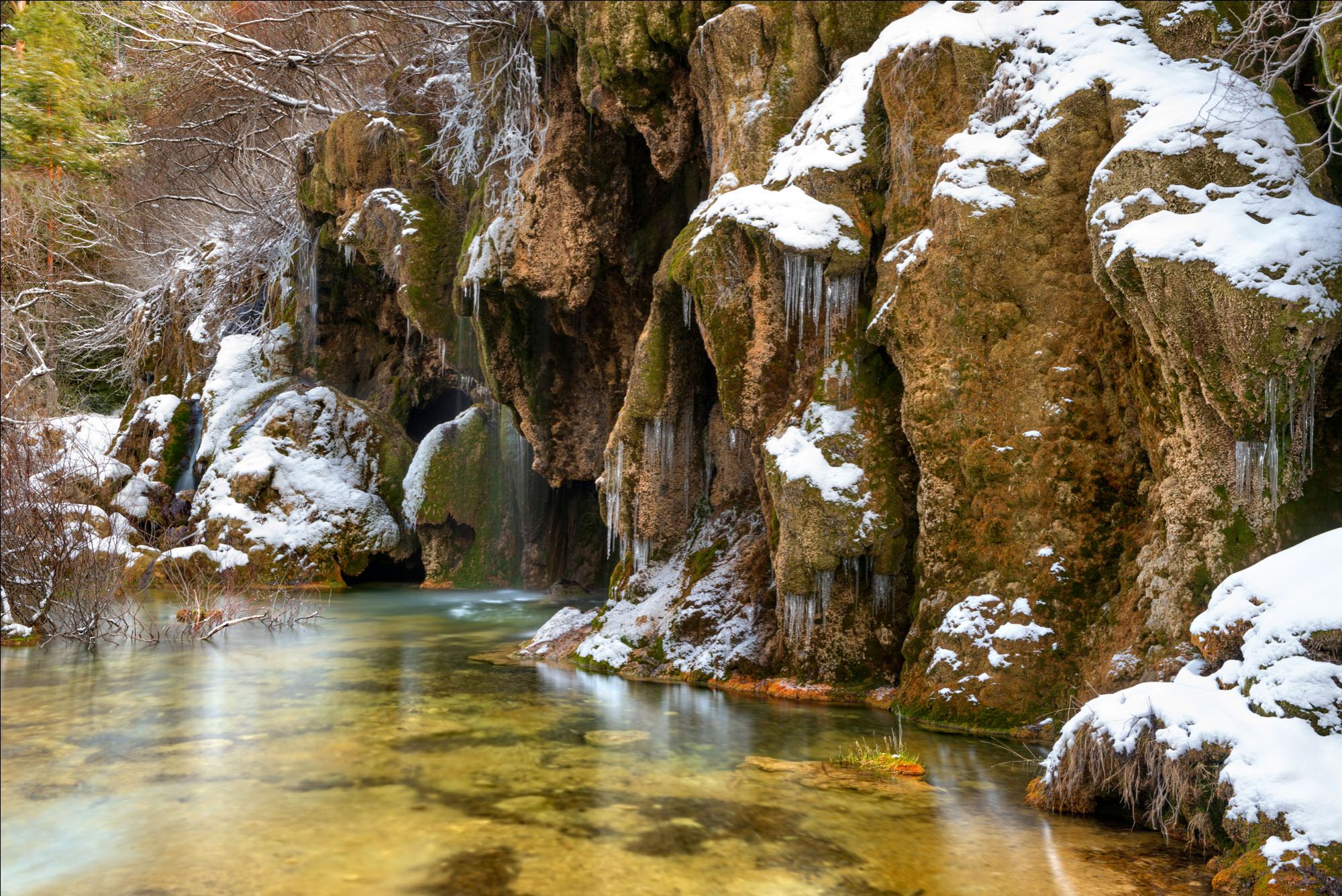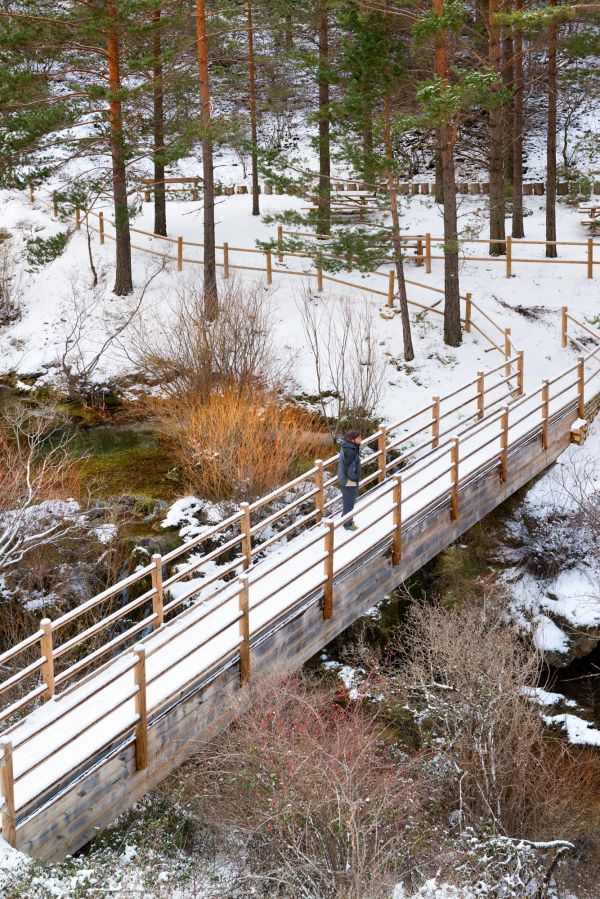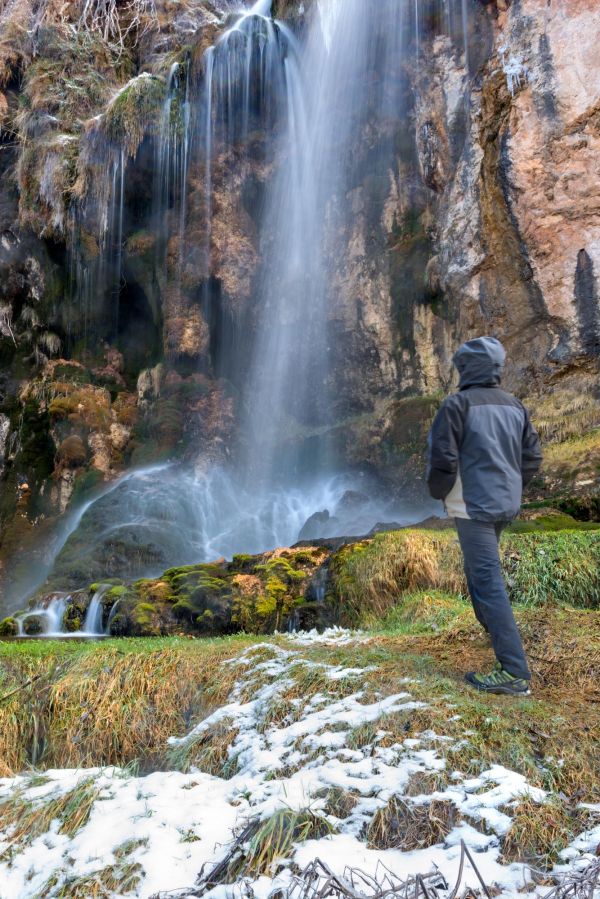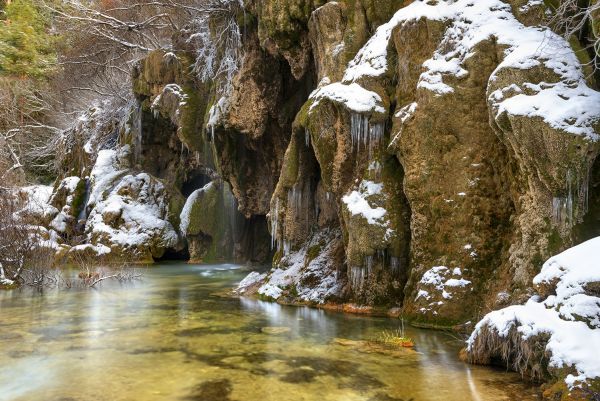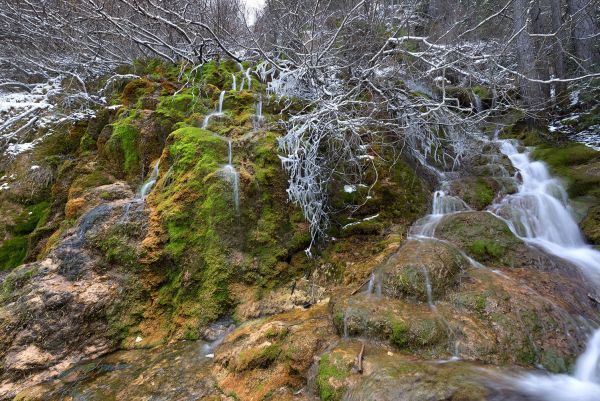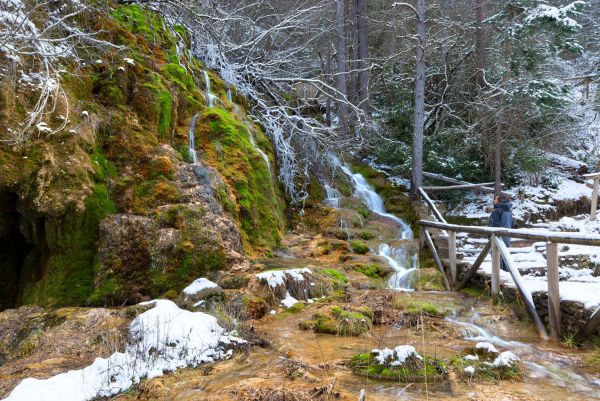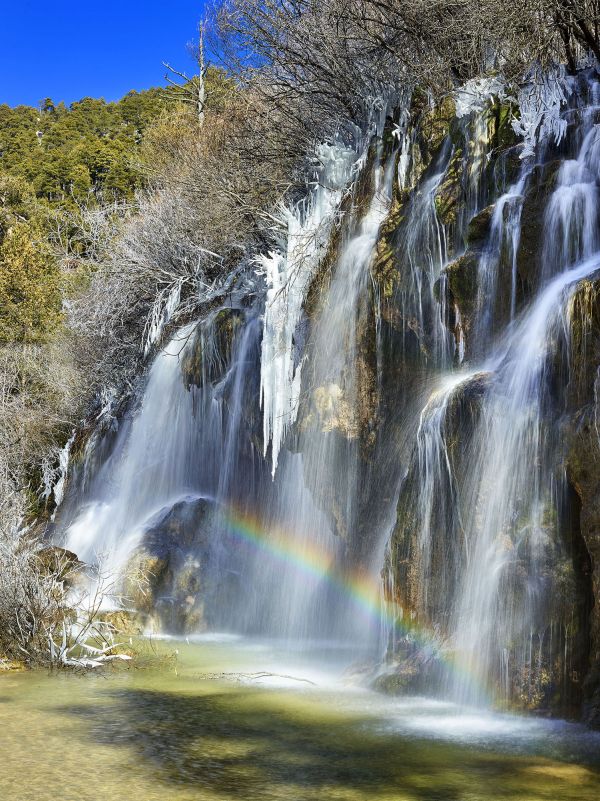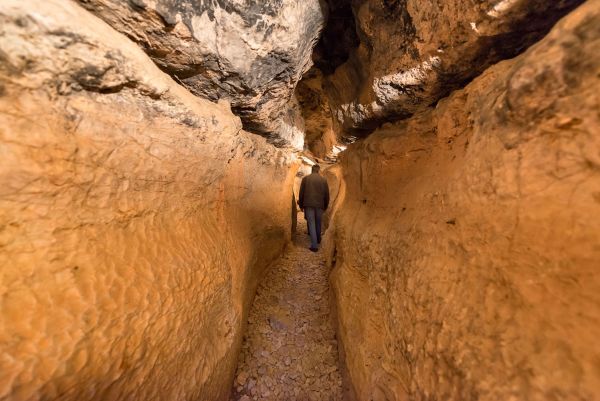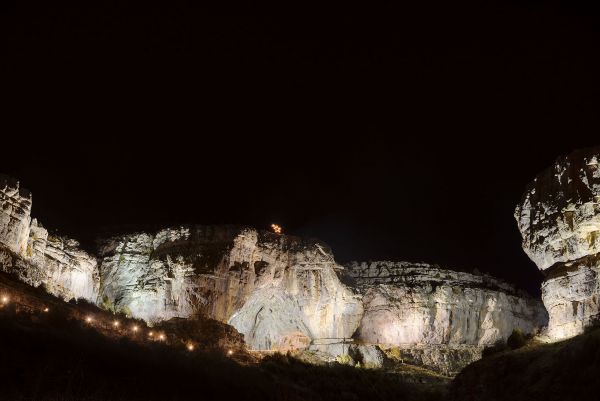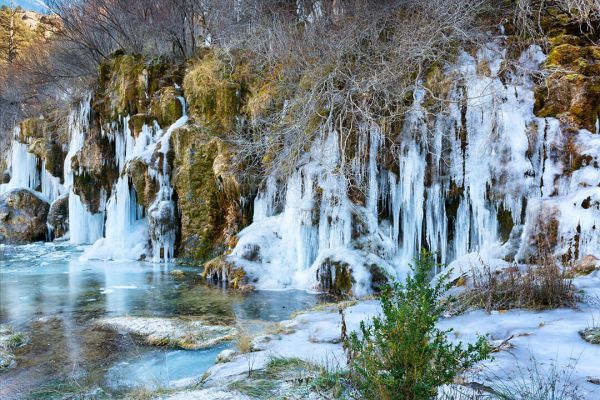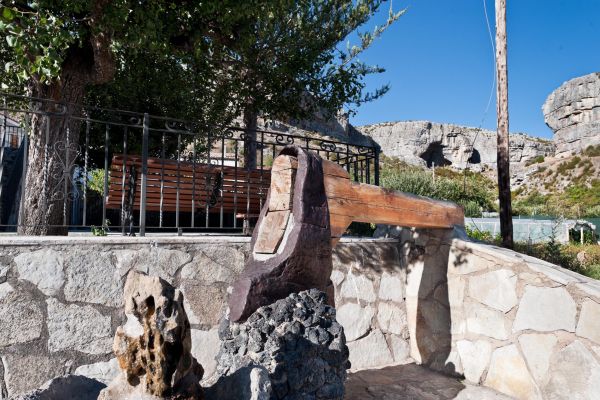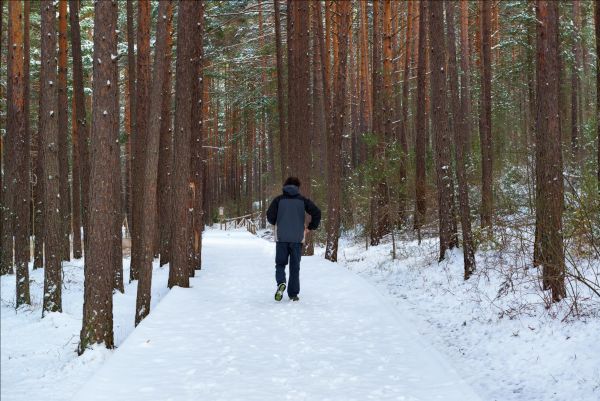Where rivers are born
Cuenca
The Serranía de Cuenca Natural Park is one of those destinations that will impress everyone, and seems to never end. Green landscape and wetlands, enchanted lakes, deep gorges carved out of limestone, lost cities, and water, lots of water. This liquid element takes centre stage in our trip.
Let’s start our journey at Tragacete. This beautiful mountain town –located an hour by car from Cuenca– is nestled in the centre of a valley, surrounded by attractive natural spots and the highest peaks in the Cuenca mountain range Visiting its streets reveals a calm hamlet, inviting us to stroll around its squares and garden-lined streets. A few kilometres from the town centre, heading towards Cuenca, we can see the Roman bridge, with a single arch, crossing the waters of the Júcar river.
Not far away lies the Mogorrita hill, reached by taking the CU-V-9161 road and after a short stroll. We get some stunning views of the area from here. We are on the border limits with Teruel and very near the source of the Tajo River.
We return to Tragacete, the birthplace of rivers, streams and springs. The track heading to the source of the Júcar river leaves from this same town.
Getting into the mountains, we continue to follow the river upstream. A beautiful waterfall has been formed next to the Chorrera Windmill. A little later, we pass the San Blas inn, located in a really charming spot and that takes its name from the strait that slowly encloses the river. The road is no longer transitable for vehicles and you have to walk for a fair distance after passing the so-called strait from Hell, until reaching the spot in the eyes of Valdeminguete, where the source of the river is found.
Our next stop is Vega del Codorno, around 13 kilometres to the north of Tragacete. The town is a succession of hamlets, in the style of Galician parishes or southern farmhouses. Its ‘capital’ is La Cueva, so called because it is literally under a giant rock shelter which leads into a natural cave several kilometres in depth. The Perchel Neighbourhood has the Source of the Cuervo River Interpretation Cente “House of the Blacksmith” –call in advance as it is not always open– the perfect place to learn a little more about this unique enclave.
A few kilometres away lies the car park for accessing the Natural Monument, a few metres away from the regional CM-2106 highway. The main attraction is the Source of the Cuervo River, the name given to this spot. The paths through pine trees, with the rustling of nearby water, lead us to impressive waterfalls and one of the most beautiful natural corners of Castilla-La Mancha.
In winter, the waterfalls freeze and snow crowns the spectacle; spring is the season of abundant water and lush vegetation; autumn has a surprising range of colours from the falling leaves, and in summer, there are grey tones on the naked, dry rocks in contrast with the river water.
However, the most popular visit is the Source of the River Path -accessible for people with reduced mobility and wheelchairs-, it’s worth delving deeper into the environment; this means we can return to the car park along the Turbera Path, where we will find interesting ethnographic and natural elements. For the more adventurous, the Pinar Path offers a comprehensive journey -a little over 11.5 kilometres- and allows us to enjoy stunning views. For this, take the turn off towards the Rincón del Cuervo lookout point.
Trekking fans will also be interested in the network of paths near the Monument belonging to the Serranía de Cuenca Natural Park, which offer 11 routes suitable for hiking and environmental education. All are signposted and have different levels of difficulty.
May also be of interest to you
Castilla-La Mancha Tourism in 2023. All rights reserved.
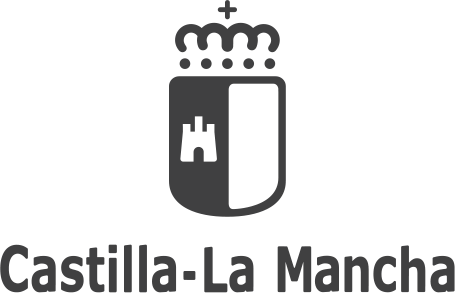
 365
365
